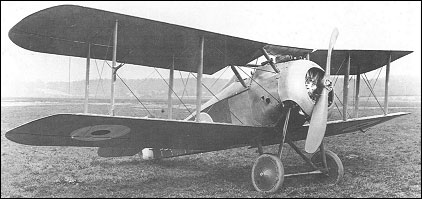 |
Sopwith T.F.2 Salamander1918 |  |
| FIGHTER | Virtual Aircraft Museum / United Kingdom / Sopwith |
 |
A requirement for an armoured single-seat ground attack fighter was issued to the Sopwith company in January 1918, a standard F.1 Camel being rapidly fitted with armour protection and triple-gun armament, and flying as the T.F.1 in the following month (T.F. indicating Trench Fighter). The T.F.1 was a stop-gap type that could be made available rapidly by modifying existing aircraft, but the requirement had specified the use of a 230hp Bentley B.R.2 nine-cylinder rotary engine and Sopwith discarded the T.F.1 in favour of a modified Snipe design as the T.F.2 Salamander. Despite many similarities to the Snipe, the Salamander differed extensively and there was little or no interchangeability between the two aircraft. The forward portion of the fuselage was a simple armoured box, the bottom being 11mm plate, the sides 6mm plate, the front - the engine backplate - 8mm plate and the rear 10-mm plate with a second 6mm plate separated by 9.50cm. Armament comprised two synchronised 7.7mm guns with provision for four 11kg bombs. The first of three prototypes was flown on 27 April 1918, and the Salamander was ordered in large numbers (contracts were placed with the parent company, Air Navigation Co, Glendower Aircraft, National Aircraft, Palladium Autocars and Wolseley Motors), 37 being on RAF charge by 31 October. When hostilities ceased, production of the Salamander continued with a view to its use by the postwar RAF, and by mid 1919, when manufacture eventually terminated, Sopwith had delivered 334 and other contractors had contributed a further 85. However, no squadron was ever equipped with this type which was abandoned in favour of the Snipe.
|  COMPANY PROFILE | |||||||||||||||||||||||||||||||||||
 |

|
